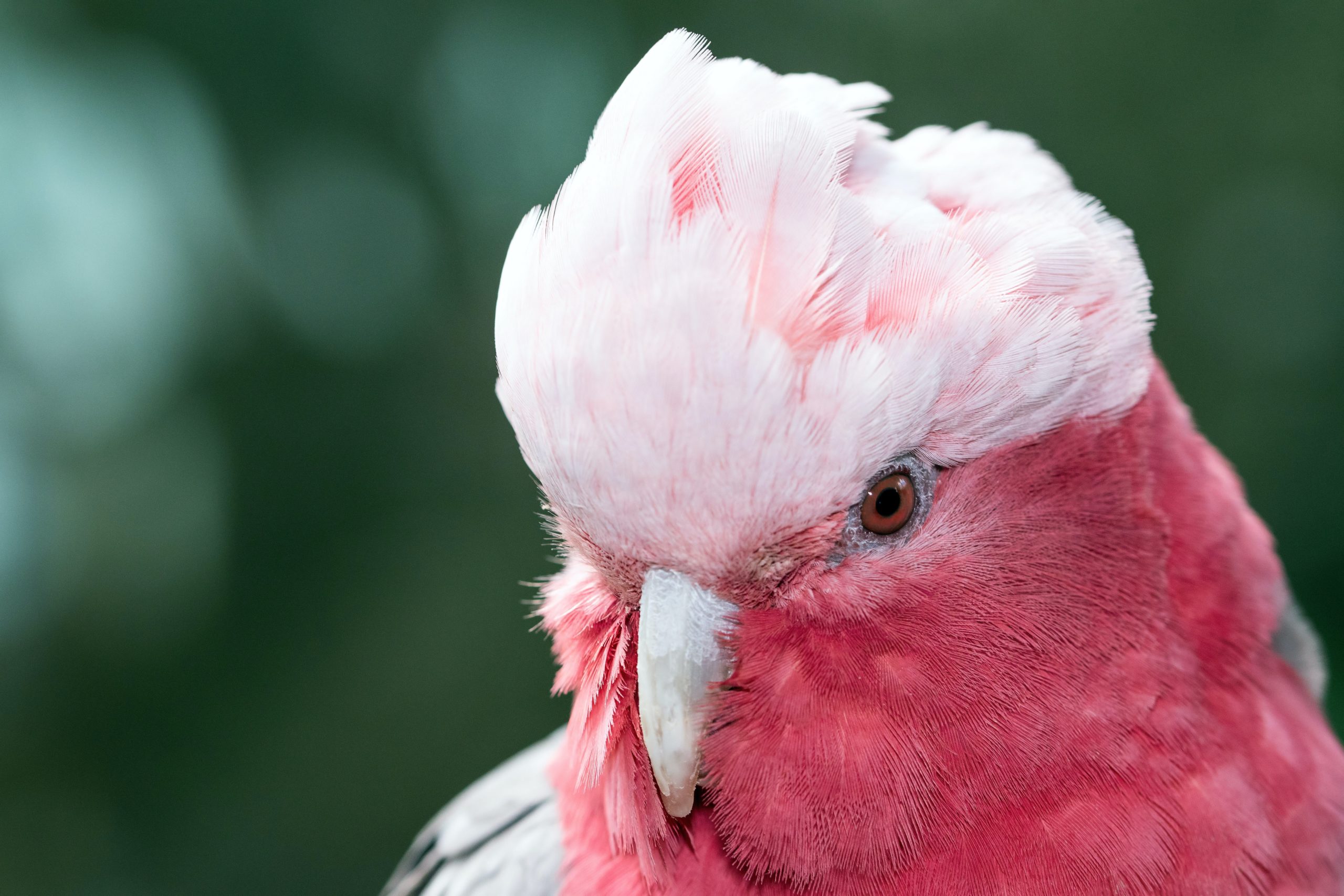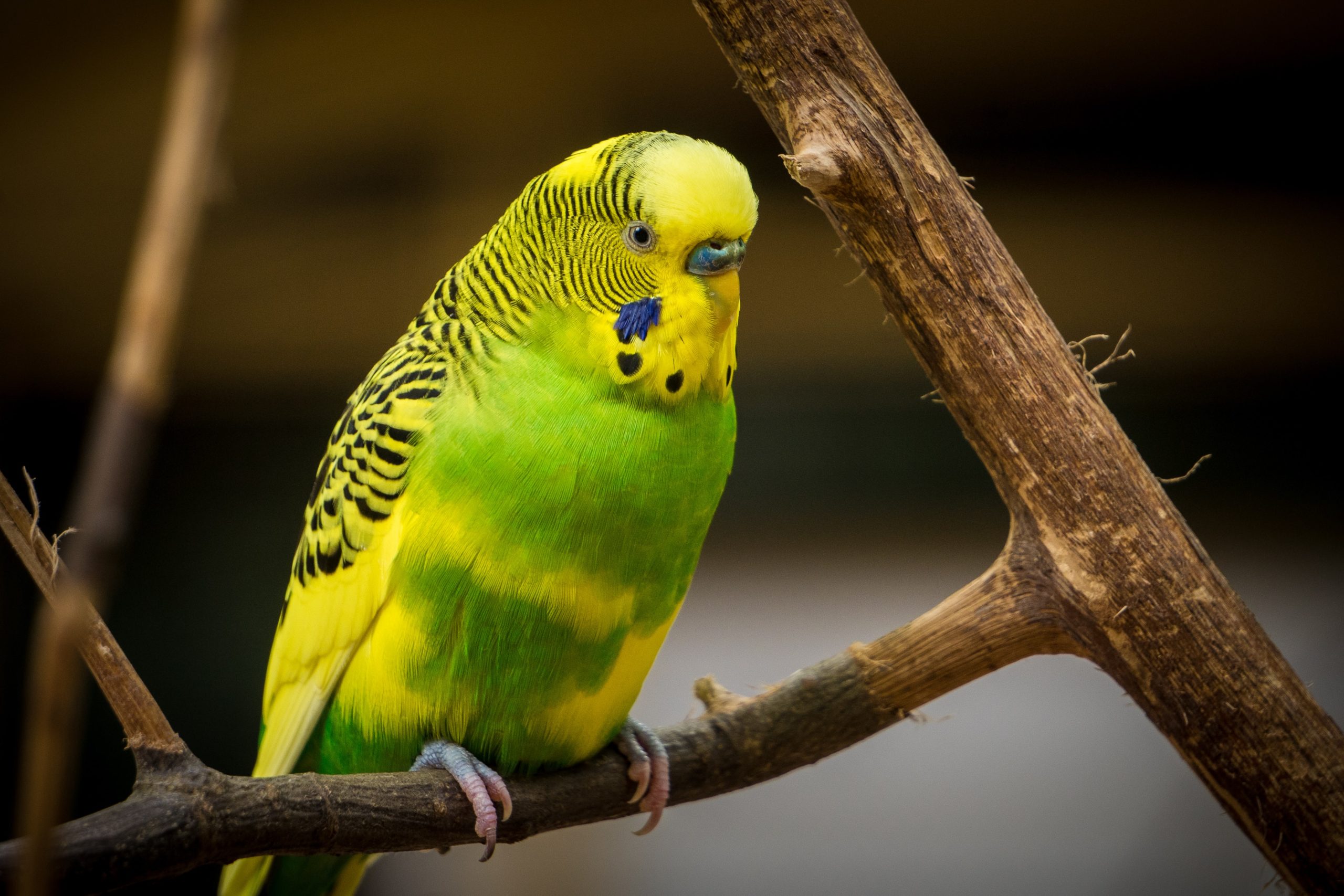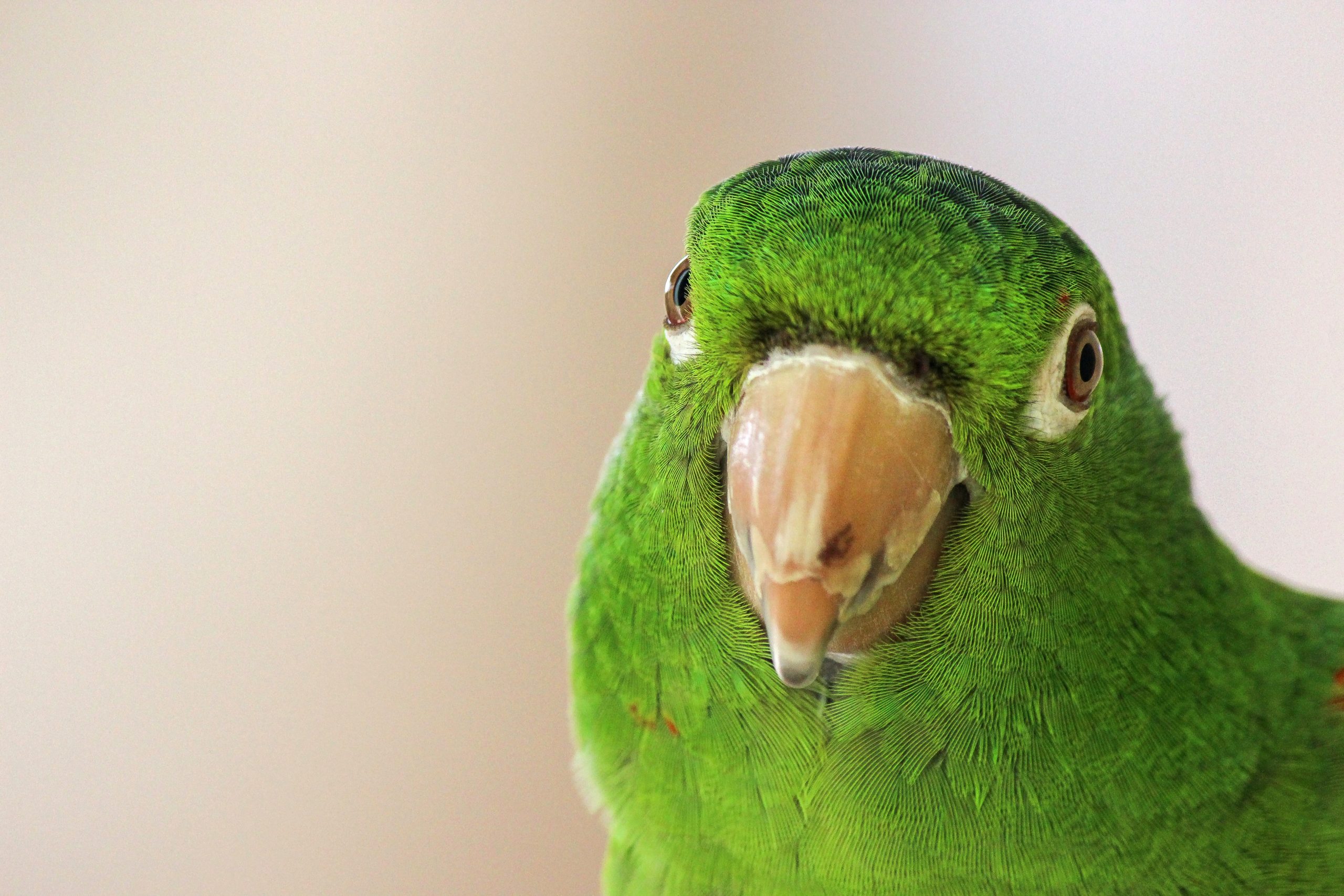It is very desirable to have a tame, affectionate and interactive bird as a family pet. Small birds such as finches and canaries may prove very difficult to befriend.
There are many methods and opinions described by various people to tame and train birds. Discuss this with your veterinarian. Your patience may be strained and bites sustained but the rewards of your new relationship with your pet are fulfilling and long lasting. The ultimate goal is to earn the birdu2019s trust and respect.
Where do I start?
When selecting a pet bird, try to choose a young bird as it will be easier to tame and train. Older, wild, colony or parent raised birds may prove difficult to tame. Hand raised babies usually make better pets as they have been completely socialized with humans. Young birds are easier to tame and adapt readily to new environments and situations.
After purchasing a new untamed bird it is wise not to bother the bird for 1 – 2 weeks to allow the bird to become accustomed to its new environment. Remember that you and the bird are strangers and need to get to know each other. Everything is new to the bird. The activities in the house, the people, sounds, smells and routines are all new experiences. It is important not to alarm the bird with sudden movements or loud noises.
Taming and training can begin when the bird appears to be settling comfortably into the new surroundings. It may be wise to have the wings trimmed by your veterinarian. This will usually make the bird more dependent on you during the taming process.
Birds can bite and even a small bird such as a budgie or a cockatiel can break the skin. Although gloves may provide some protection from most bites, a bird may become frightened of them and may not distinguish between the 5 fingered shape of the gloves and the 5 fingers of your hand. You do not want the bird to become fearful of your hand. Do not stress the bird. A couple of 15 – 20 minute sessions per day is a good start.
How do I hand train my bird?
Having the bird become comfortable with the presence and closeness of your hand in the cage may be accomplished by getting the bird to take food out of your hand.
The next step is to work slowly and gently train your bird to step onto a stick. Move slowly, but deliberately and talk quietly to the bird as you introduce the stick into the cage toward the birdu2019s upper legs and lower chest area. Once the bird is comfortable perching on a stick, you can move the hand holding the stick closer to the bird until the hand replaces the stick as the perch.
Remember that birds (especially the larger birds) use their beak as a third hand for balance and will often reach out to hang on while stepping up. You must attempt to show confidence and try not move. Pulling away may frighten the bird and lead to a bite. The bird may also learn to control you by simply reaching out with the beak to make you ‘go away’.
Food may help to distract the bird as well as reward it. Friends and family should be coached and encouraged to work with the bird in the same way. You have now made great steps forward in the training process. Touching, petting, head scratching and snuggling will follow from here with persistence and patience.
What if my bird bites me?
If your bird tries to bite you, remember to keep your fingers together and curled inward. It is harder to bite a flat surface than individual fingers. Pull your hand a short distance out of his reach but hold your ground.
If the bird does bite and holds onto you, try to remain calm while gently prying the beak open. A stern verbal ‘NO’ is useful. NEVER hit a bird as they do not respond to this sort of discipline. They will lose their trust in you and may learn to fear hands. Some larger species of the parrot, namely Cockatoos and Macaws can inflict serious wounds so caution should be taken when handling a newly acquired bird.
How do I get my bird to talk?
Budgies, Cockatiels, Amazon parrots, African Grey parrots, Cockatoos and Macaws all have the capacity to ‘talk’ or mimic. Some species speak better than others. Even among the same species, some individuals may never talk while others will not stop talking.
Individuals may develop extensive vocabularies of words, songs, verse, whistles, sneezing, coughing and electronic noises such as telephones and microwave ovens. The bird is simply mimicking what it hears and will generally repeat sounds it hears frequently. Many words and sounds a bird learns are those that happen all the time, even though you did not sit down and ‘teach’ the bird.
Generally, males tend to be better talkers but there are wonderfully talented female talkers. Some suggest that you do not teach your bird to whistle since this is easy and may be preferred to talking. Once again, it takes time, patience and repetition to train a bird.




